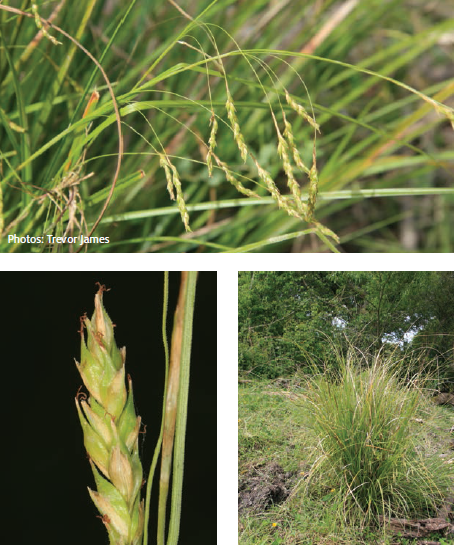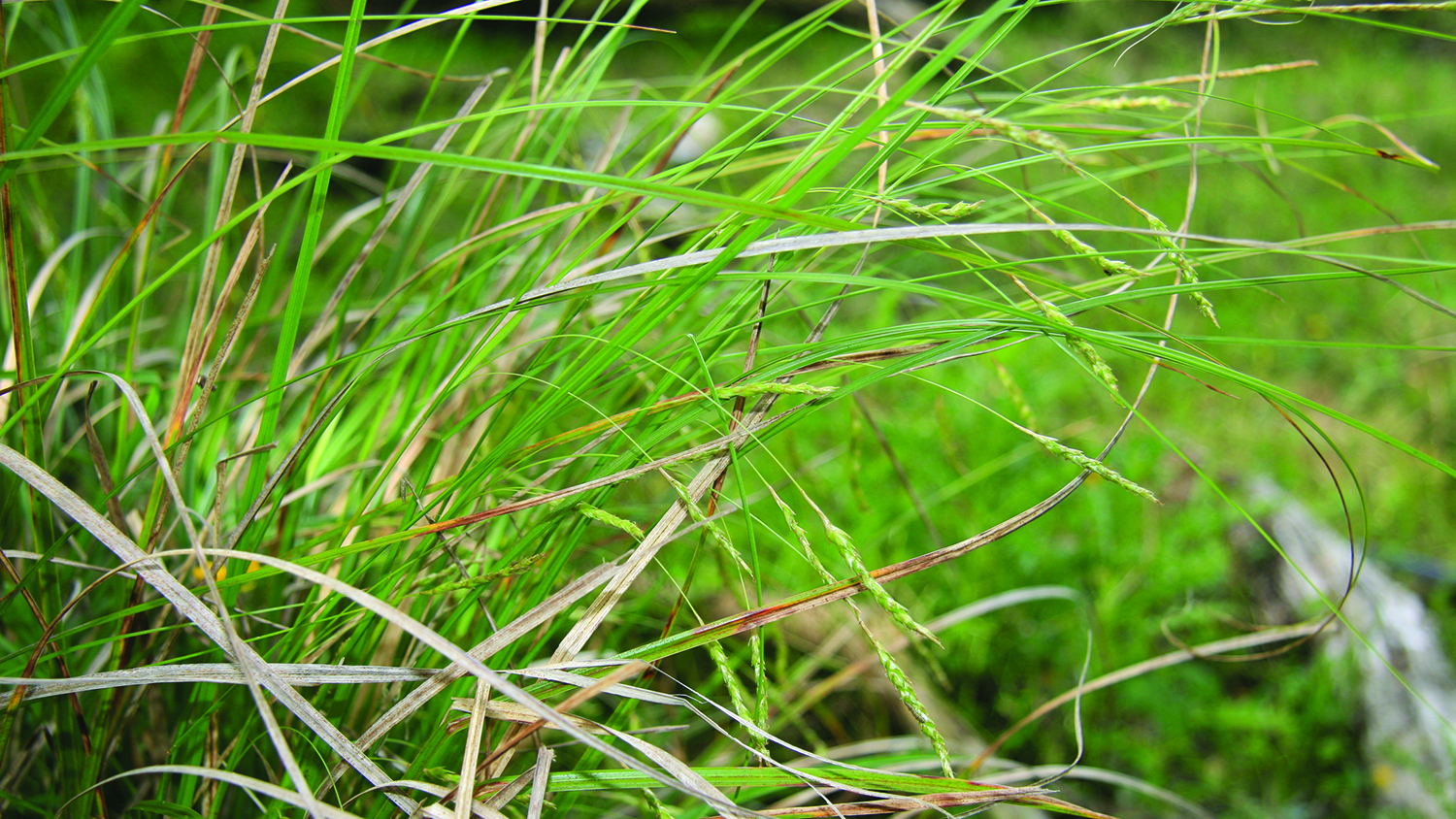Australian sedge, an accidental introduction to New Zealand, is a densely tufted, deep-rooted perennial plant which can grow to almost 1m tall.
Unlike most sedges, which prefer swampy areas, Australian sedge grows on land which is dry. It establishes in disturbed and open sites, in coastal and lowland areas, open pasture, sheltered and sloping scrubland, and stone terraces. Australian sedge is distinguished in New Zealand by its distinctive flower/seed head and tillering.

What does it look like?
Australian sedge is distinguished from other Carex species by its distinctive flower/seed head, and the fact that it produces tillers (shoots that grow from the base of the plant).
Flower
- Flowering stems are triangular in cross section and sharply angled.
- Flowers are very small and grouped in catkin-like spikes, most of which are female.
- Flowers hang at the end of long thin nodding stalks.
Fruit/seed
- Seeds are small smooth triangular nuts.
- Seeds are enclosed within a long beaked covering about 5mm long.
Leaf
- Leaves are about 5mm wide, Y-shaped in cross section (with gradually tapering tips), often exceeding the flowering stems in length.
- Leaf edges are harsh and will cut if you pull your fingers through the leaves.
- The sheath at the bottom of each leaf is dark brown.
Why is it a pest?
Australian sedge forms dense tussock infestations 30cm-90cm high in pasture areas. It is unpalatable to stock and reduces farm production by crowding out pasture. In open grassland areas, Australian sedge is also a threat to native species as it competes with seedlings.
It establishes and spreads most rapidly on disturbed and exposed soil where pasture doesn’t thrive due to low soil fertility, drought, overgrazing or insect damage.
Australian sedge produces many seeds, which remain viable for three to five years. Once established, it can spread rapidly throughout the farm via livestock. The seed is quite heavy and most falls within 30cm of the plant. This creates an ever-increasing ‘mattress’ of Australian sedge.
Control methods
Physical control
Grubbing should only be used to deal with scattered isolated plants. It is a costly and ineffective method of control for large infestations. Breaking up the plant encourages seeds to germinate and the ground becomes reinfested. Australian sedge will regenerate from fragments, so all root stock must be collected and disposed of. It is necessary to recheck the site regularly for seedlings and regrowth.
Herbicide control
Spray application
Glyphosate is an effective herbicide against Australian sedge. The area should be checked and resprayed each year to kill new seedlings and regrowth. The optimum time for spraying is November through to March. The best protection against reinfestation from seed still in the soil is a dense pasture cover.
Safety when using herbicides
- Follow the instructions on the manufacturer’s label.
- Always wear protective clothing.
- Always minimise the risk to your other plants.
- Contact the supplier for further advice.
Summary of herbicides and application methods for control
| Herbicide | Application |
| Glyphosate | Spray application |
| Herbicide rules will apply. You may need to notify neighbours if spraying. The Waikato Regional Plan explains the agrichemical (herbicides) use rule in section 6.2 in the Waikato Regional Plan. | |
More information
Advice
For advice and additional information on control methods, call our pest plant staff on freephone 0800 800 401
Publications
The following publications are available for download or from Waikato Regional Council. Contact us to request a copy (freephone 0800 800 401).



